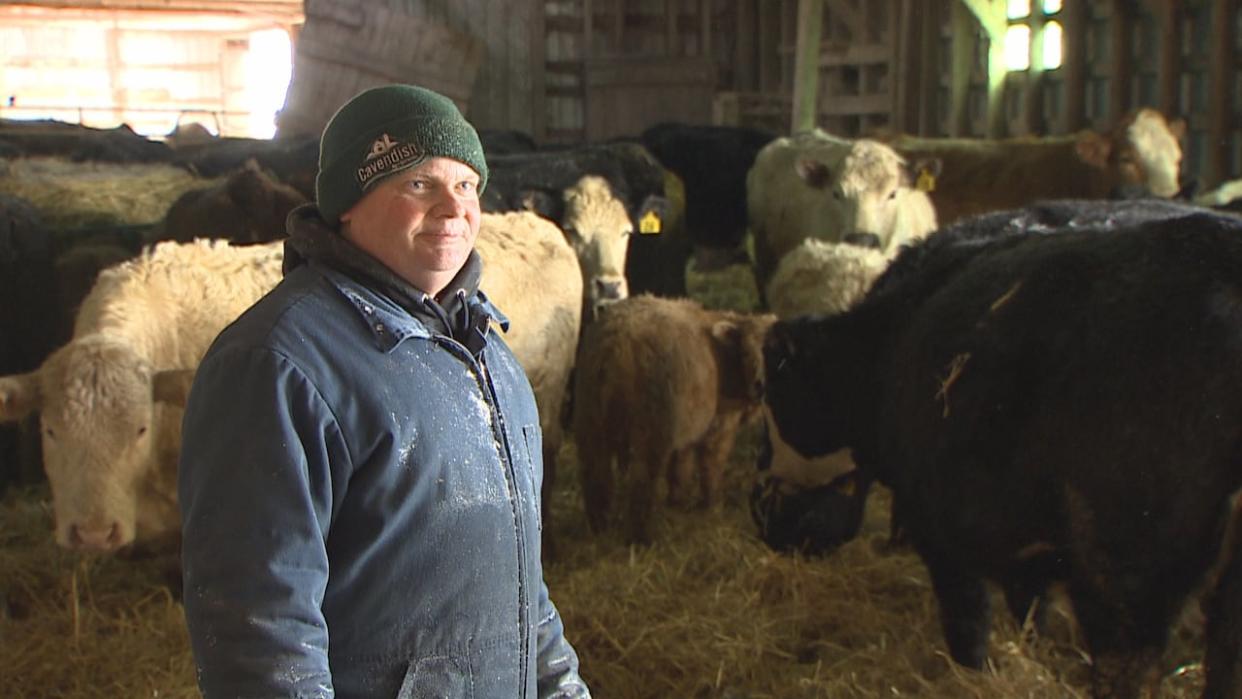Record-high calf prices a new challenge for P.E.I. beef industry expansion

Cattle farmers on Prince Edward Island are having to consider whether the current high prices for beef will guarantee them a profit, even if they expand their herds.
The number of beef cattle on P.E.I. hit a peak in 2007 with more than 16,000 animals.
But the BSE crisis, often called mad cow disease, pushed farmers out of raising beef, and the industry has still not recovered.
A Statistics Canada report recorded just 7,100 beef cattle on the Island on Jan. 1 of this year.
High beef prices seem like an opportunity for recovery, but calves are also very expensive right now.
"It's at an all-time high," said Dennis Hogan, chair of the P.E.I. Cattle Producers Association.
"It's good for the guy that's selling at $4.50 a pound. If you're buying at $4.50 a pound it's certainly putting some pressure on you to try to make a profit."
Production in the beef cattle industry is segmented.
There are cow-calf operations, which breed the cattle. The calves are sold to feedlots, where the cattle are raised to market size and sold to a beef plant for slaughter.
Post BSE, Hogan said he could buy calves for 75 cents per pound.
Drought in the Prairies
Currently, the supply of calves is down in Canada.
A drought on the Prairies in 2021 led farmers in that region to cull herds they couldn't afford to feed, and the national herd still hasn't recovered. There are about seven per cent fewer cattle on cow-calf operations in Canada now than there were in 2021.

Following a drought on the Prairies in 2021, there are still fewer cattle on cow-calf operations in the country. (William Thomas Cain/Getty Images)
A surplus of corn in Ontario and Quebec is also driving down feed prices there, said Hogan.
"The feed's a little cheaper," he said. "They can raise them a little cheaper than they can on P.E.I."
When a farmer can expect to spend less to raise a calf, that allows them to pay more for that calf to begin with — putting farmers who don't have those lower costs at a disadvantage.
Land for expansion is also an issue, said Hogan. It's always been a challenge for beef farmers to compete with potato farmers for land on P.E.I., he said, and now there is pressure from residential development as well.
"People are buying land for 10,000 bucks an acre plus for development," Hogan said.
"Beef producers can't compete with that. So there is a lot working against the beef industry now."
But Hogan remains optimistic about the industry's future. There is a lot of interest in beef farming, he said. He believes the industry will grow, but it will take time.

